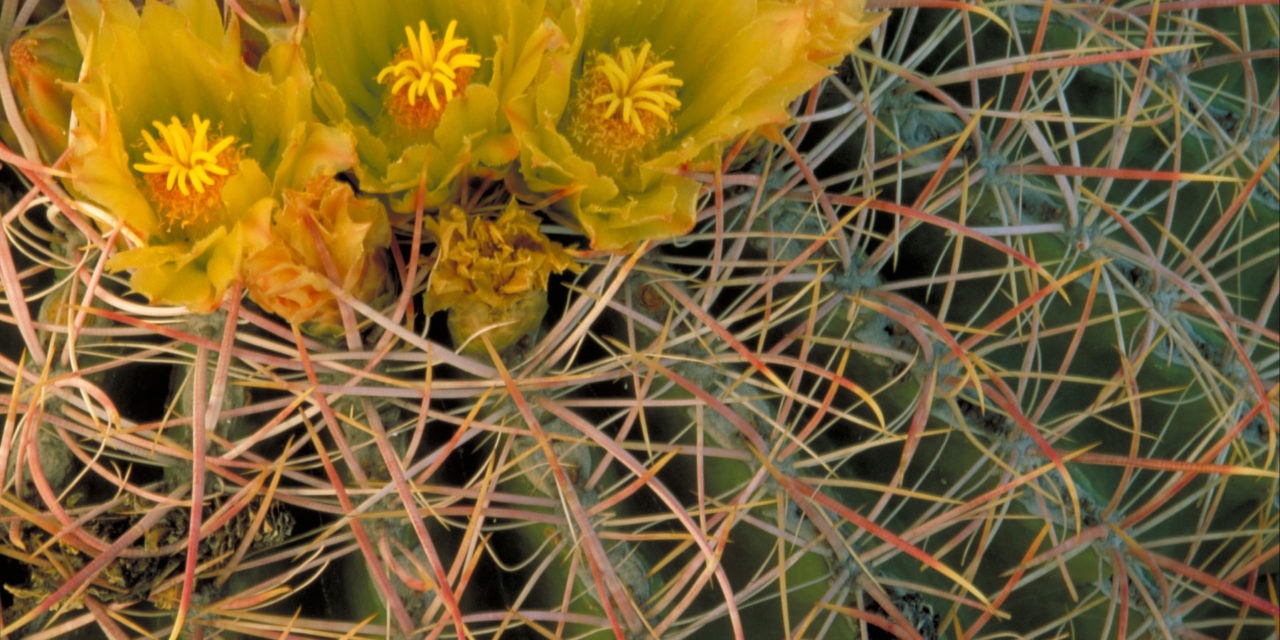Day hikers can head to a palm oasis featuring a weeping wall of maidenhair ferns near Palm Springs.
The 4.3-miles round trip Fern Canyon Trail sits in the Agua Caliente Band of Cahuilla Indians Reservation’s famed Indian Canyons. A fee is required to hike the canyon.
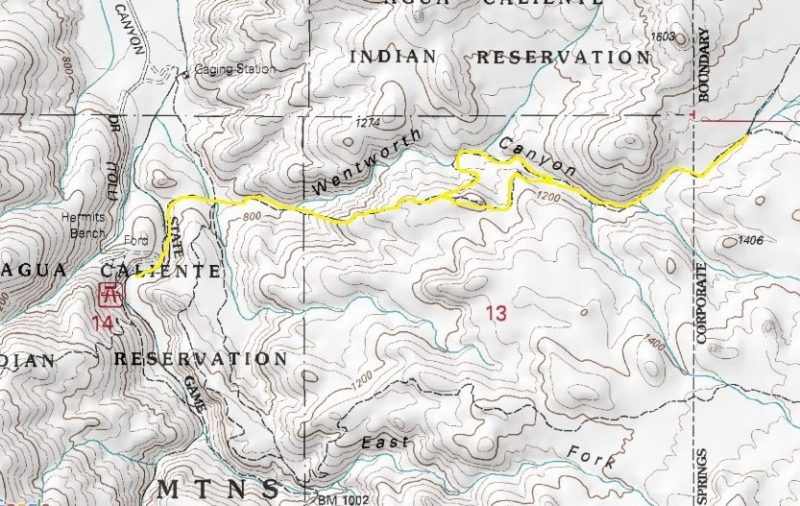
Fern Canyon topo map
To reach the trailhead, from Calif. Hwy. 111 in Palm Springs, take S. Palm Canyon Drive south into Indian Canyons. The road ends at the Trading Post; use the “additional parking” overflow lot. From there, go to the kiosk in the lot then follow the signs to Fern Canyon; the trailhead is on the lot’s north side.
The trail begins in dry, dusty desert as heading up a narrow canyon. The usually dry creek – a tributary to the Palm Canyon Wash – flows out of the foothills to create the canyon. In spring, the canyon can be quite colorful as melting water fosters several blooms.
Among the common desert plants here is the barrel cactus. There are a variety of species, but as their name suggests, they typically are barrel shaped. Look for their brilliant yellow or orange flowers on the barrel’s top in April. While tiny, they are tough little plants. In fact, they’ll probably outlive you, as they boast a lifespan of 100 years.
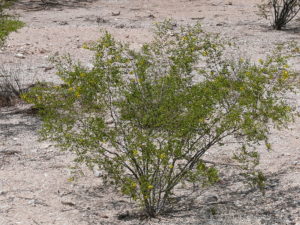
The creosote bush is easily recognizable by its railroad tie scent.
The creosote bush also is widespread. An evergreen shrub that can grow up to almost 10 feet high, it often smells like creosote, a preservative used on railroad ties. When the bush’s oldest branches die, the crown usually splits with the new one becoming a clone. In fact, the King Clone creosote bush found in nearby Lucerne Valley is one of the Earth’s oldest living organisms, having been around around for an estimated 11,700 years.
Brittlebush is prevalent as well. The common desert shrub usually grows between a foot to five feet in height. Spanish missionaries in California burned its dried sap as incense while cowboys would break off branches to brush their teeth.
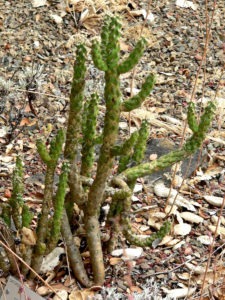
California cholla looks like a miniature saguaro.
Cholla also can be seen. Several varieties of cholla grow across the Southwest, but all have cylindrical stems. The California variety often looks like a miniature saguaro.
About 1.1 miles into the hike, you’ll get a good view of the oasis below. The trail then descends into it.
Giant, old California fan palms dominate the oasis. The fan palm can grow up to 66 feet tall and 20 feet broad. When the fronds die, they drop and skirt the trunk, offering shelter for many small birds and insects.
To one side of the oasis is a seeping wall with maidenhair ferns hanging down from it. Worldwide, there are 250 varieties of this fern that are well-adapted to growing in a variety of environments, so don’t be surprised if these ferns look a little different than what grows around your home. The one thing that all maidenhairs have common, though, is their fronds have the ability to shed water without becoming wet.
The rock wall usually only seeps in spring. Mid-April is a good time look for the verdant ferns; other times of the year, you’ll just see the dried remnants of last spring’s bounty.
You can walk on either side of the oasis. Anyplace in between is a great spot for a picnic.
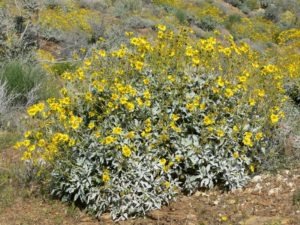
Missionaries used brittlebush as incense while cowboys found it a handy toothbrush.
Watch for the western whip-tailed and the leopard lizard, both of which like to nestle inside the dead palm fronds and between rock crevices. Dragonflies also can be seen. Be careful where you step, though, as rattlesnakes have been spotted here.
Beyond the oasis, the trail re-enters the dry desert as leading to a plateau. The Cathedral City cove sitting beyond Cathedral Canyon is to the northeast.
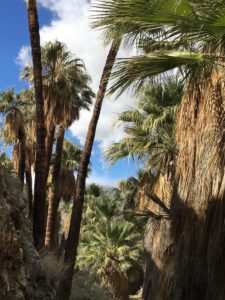
California fan palms dominate the Fern Canyon oasis.
When the trail forks, about 2.15 miles in, return the way you came. You can shorten the hike to a 2.6-mile round trip by turning back after exploring the oasis.
Always don sunscreen, sunhat and sunscreen as well as carry plenty of water when taking this trail. While parts of the canyon is lush, much of it is in the open sun. Indian Canyons typically is open 8 am to 4 pm. Be forewarned that sometimes maps refer to Fern Canyon as Wentworth Canyon
Image Sources
- California cholla: Rob Bignell
- California fan palms: Rob Bignell
- Barrel cactus: Rob Bignell

